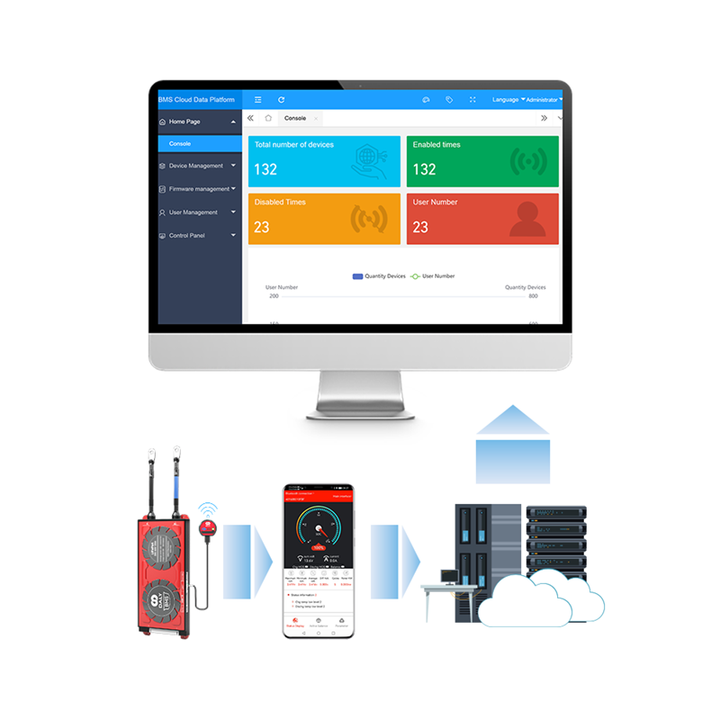Comprehensive Guide To Remote IoT Batch Job Example
In today's rapidly evolving digital landscape, remote IoT batch job examples play a pivotal role in shaping how data is processed and managed in real-world applications. As businesses increasingly rely on Internet of Things (IoT) technologies, understanding the nuances of remote batch processing becomes essential for optimizing efficiency and scalability. This article delves into the intricacies of remote IoT batch job examples, offering valuable insights and actionable strategies for professionals and enthusiasts alike.
Whether you're a developer exploring new ways to manage IoT data or an organization seeking to enhance your operational capabilities, this guide will provide you with a detailed understanding of remote IoT batch jobs. By examining practical examples and exploring the latest trends, we aim to equip you with the knowledge needed to harness the full potential of IoT technologies.
Throughout this article, we'll cover everything from the basics of remote IoT batch jobs to advanced implementation techniques. With a focus on delivering actionable insights, we'll ensure that you're well-equipped to tackle the challenges and opportunities presented by this exciting field.
- Mia Khalifa The Rise Challenges And Legacy Of A Global Icon
- Movierulz In Telugu The Ultimate Guide To Understanding And Accessing Telugu Movies
Table of Contents
- Introduction to Remote IoT Batch Jobs
- Benefits of Remote IoT Batch Processing
- Real-World Remote IoT Batch Job Examples
- Setting Up a Remote IoT Batch Job
- Tools and Technologies for Remote IoT Batch Jobs
- Optimizing Remote IoT Batch Jobs
- Security Considerations in Remote IoT Batch Processing
- Common Challenges and Solutions
- Future Trends in Remote IoT Batch Jobs
- Conclusion and Next Steps
Introduction to Remote IoT Batch Jobs
Remote IoT batch jobs refer to the process of executing predefined tasks or scripts on IoT devices located in remote environments. These jobs are typically scheduled to run at specific intervals, enabling the efficient collection, processing, and analysis of data without requiring constant human intervention. The ability to automate such processes has revolutionized industries ranging from manufacturing to healthcare.
In this section, we'll explore the fundamental concepts of remote IoT batch jobs, including their definition, purpose, and significance in modern data management. By understanding the basics, you'll be better positioned to leverage these technologies for your specific needs.
Key takeaways include:
- Stream Hd Movies Your Ultimate Guide To Highdefinition Entertainment
- Bolly4u La Movies Your Ultimate Destination For Bollywood Entertainment
- Definition of remote IoT batch jobs.
- Importance of automation in IoT data processing.
- Applications across various industries.
Benefits of Remote IoT Batch Processing
Remote IoT batch processing offers numerous advantages that make it an indispensable tool for organizations seeking to enhance their operational efficiency. By automating repetitive tasks and enabling scalable data management, businesses can achieve significant cost savings and improve overall performance.
Increased Efficiency
One of the primary benefits of remote IoT batch processing is its ability to streamline workflows. By automating data collection and analysis, organizations can reduce the time and resources required for manual tasks, allowing employees to focus on more strategic activities.
Cost Savings
Implementing remote IoT batch jobs can lead to substantial cost reductions. With fewer human resources needed for data management, businesses can allocate their budgets more effectively, investing in innovation and growth initiatives.
Scalability
Remote IoT batch processing systems are inherently scalable, making them ideal for organizations with growing data requirements. As your needs expand, you can easily adjust your batch job configurations to accommodate increased workloads.
Real-World Remote IoT Batch Job Examples
To better understand the practical applications of remote IoT batch jobs, let's examine some real-world examples. These case studies illustrate how businesses across various industries are leveraging IoT technologies to drive innovation and improve efficiency.
Manufacturing
In the manufacturing sector, remote IoT batch jobs are used to monitor production lines and optimize equipment performance. By analyzing sensor data in real-time, manufacturers can identify potential issues before they lead to costly downtime.
Healthcare
Healthcare providers utilize remote IoT batch jobs to manage patient data and monitor health metrics. For example, wearable devices can transmit vital signs to a central database, where batch processing algorithms analyze the information to detect anomalies and alert medical professionals.
Agriculture
Smart farming applications employ remote IoT batch jobs to automate irrigation systems and optimize crop yields. By collecting data on soil moisture, weather conditions, and other factors, farmers can make informed decisions to maximize productivity.
Setting Up a Remote IoT Batch Job
Setting up a remote IoT batch job involves several key steps, from selecting the appropriate hardware and software to configuring the system for optimal performance. Below, we'll walk you through the process, providing step-by-step guidance to ensure a successful implementation.
Step 1: Define Your Requirements
Begin by identifying the specific needs of your project. What type of data do you need to collect? How frequently should the batch job run? Answering these questions will help you design a system that aligns with your goals.
Step 2: Choose the Right Tools
Selecting the appropriate tools and technologies is critical for the success of your remote IoT batch job. Consider factors such as compatibility, scalability, and ease of use when evaluating options.
Step 3: Configure and Test
Once your system is in place, thoroughly test it to ensure it functions as intended. Pay close attention to data accuracy, processing speed, and system reliability to address any potential issues before deployment.
Tools and Technologies for Remote IoT Batch Jobs
A wide range of tools and technologies are available to support remote IoT batch jobs. From open-source platforms to proprietary solutions, choosing the right combination of tools is essential for achieving your desired outcomes.
Open-Source Platforms
Platforms such as Apache NiFi and Apache Kafka offer robust capabilities for managing IoT data streams. These tools provide flexibility and scalability, making them ideal for organizations with diverse requirements.
Cloud-Based Solutions
Cloud services like AWS IoT and Microsoft Azure IoT provide powerful tools for managing remote IoT batch jobs. With features such as automatic scaling and real-time analytics, these platforms enable businesses to harness the full potential of IoT technologies.
Custom Solutions
For organizations with unique requirements, custom-built solutions may be the best option. By developing tailored systems, businesses can ensure optimal performance and functionality for their specific needs.
Optimizing Remote IoT Batch Jobs
Optimizing remote IoT batch jobs involves fine-tuning various parameters to maximize efficiency and performance. By implementing best practices and leveraging advanced techniques, you can achieve significant improvements in your system's capabilities.
Data Compression
Compressing data before transmission can reduce bandwidth usage and improve processing speed. This technique is particularly useful for applications involving large datasets.
Parallel Processing
Utilizing parallel processing techniques can significantly enhance the performance of remote IoT batch jobs. By dividing tasks into smaller components and processing them simultaneously, you can achieve faster results.
Resource Management
Effective resource management is crucial for maintaining system stability and ensuring optimal performance. Monitor resource usage regularly and adjust configurations as needed to prevent bottlenecks and improve efficiency.
Security Considerations in Remote IoT Batch Processing
Security is a critical concern when implementing remote IoT batch jobs. With sensitive data being transmitted and processed, it's essential to implement robust security measures to protect against potential threats.
Data Encryption
Encrypting data during transmission and storage is a fundamental security practice. By ensuring that data remains confidential and secure, you can mitigate the risk of unauthorized access or data breaches.
Access Control
Implementing strict access control policies is another key strategy for enhancing security. By limiting access to authorized personnel only, you can reduce the likelihood of unauthorized modifications or data exposure.
Regular Audits
Conducting regular security audits helps identify vulnerabilities and address them before they can be exploited. Stay informed about the latest security threats and best practices to ensure your system remains protected.
Common Challenges and Solutions
Despite the many advantages of remote IoT batch jobs, several challenges can arise during implementation. Below, we'll discuss some common obstacles and provide solutions to help you overcome them.
Data Overload
Managing large volumes of data can be overwhelming, but implementing data filtering and prioritization techniques can help alleviate this issue. Focus on collecting and processing only the most relevant data to improve efficiency.
Network Connectivity
Poor network connectivity can disrupt remote IoT batch jobs, leading to data loss or incomplete processing. To address this, consider using redundant connections or implementing offline processing capabilities.
System Complexity
As systems grow in complexity, maintaining them can become increasingly challenging. To simplify management, adopt modular design principles and leverage automation tools to streamline operations.
Future Trends in Remote IoT Batch Jobs
The future of remote IoT batch jobs looks promising, with advancements in technology driving innovation and expanding possibilities. Emerging trends such as edge computing and artificial intelligence are set to transform how IoT data is processed and utilized.
Edge Computing
Edge computing enables data processing to occur closer to the source, reducing latency and improving performance. As this technology continues to evolve, we can expect to see even more efficient and responsive remote IoT batch jobs.
Artificial Intelligence
AI-powered systems offer the potential to automate complex tasks and enhance decision-making capabilities. By integrating AI into remote IoT batch jobs, organizations can achieve greater accuracy and efficiency in their operations.
Interoperability
As IoT devices and systems become more interconnected, interoperability will play an increasingly important role in ensuring seamless communication and collaboration. Standardization efforts and open protocols will be key to achieving this goal.
Conclusion and Next Steps
In conclusion, remote IoT batch jobs represent a powerful tool for managing and processing IoT data in remote environments. By understanding the concepts, benefits, and challenges associated with these technologies, you can harness their full potential to drive innovation and improve efficiency in your organization.
We encourage you to take action by exploring the resources and tools mentioned in this article. Share your thoughts and experiences in the comments section, and don't hesitate to reach out if you have any questions or need further guidance. Together, let's shape the future of IoT technologies and unlock new possibilities for growth and success.
- Hdhub4umovies Your Ultimate Destination For Highquality Movie Streaming
- Download Telugu Movies 2025 A Comprehensive Guide To Movierulz

Remote IoT Device Management Guide,Security & Challenges

IOT System BMS CLOUD LAUNCHED GRANDLY Easily achieve remote, batch

Remote Job Offer Letter Template